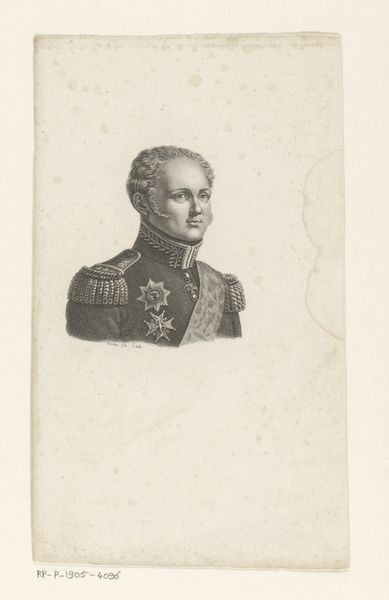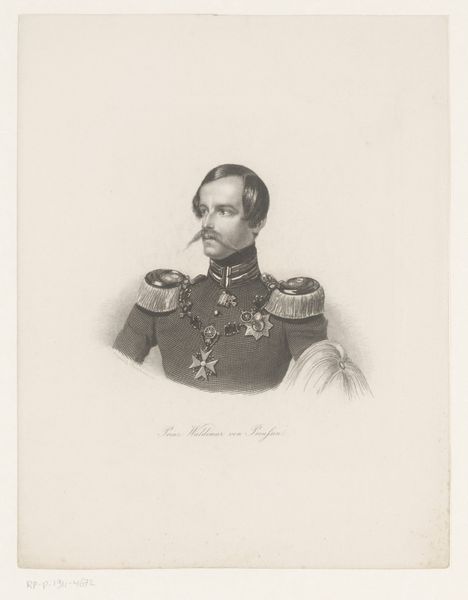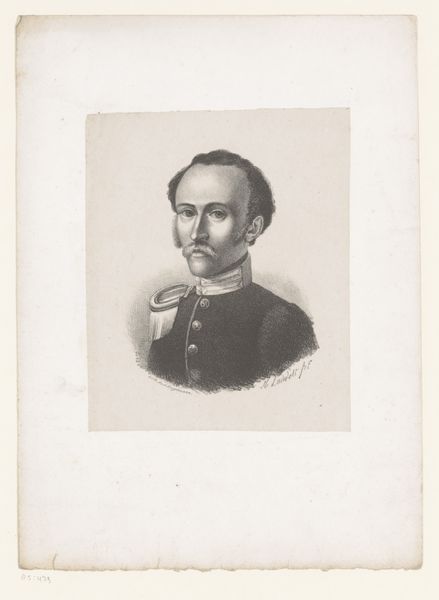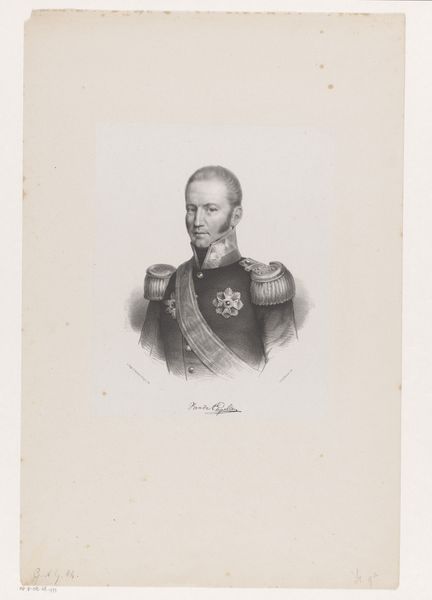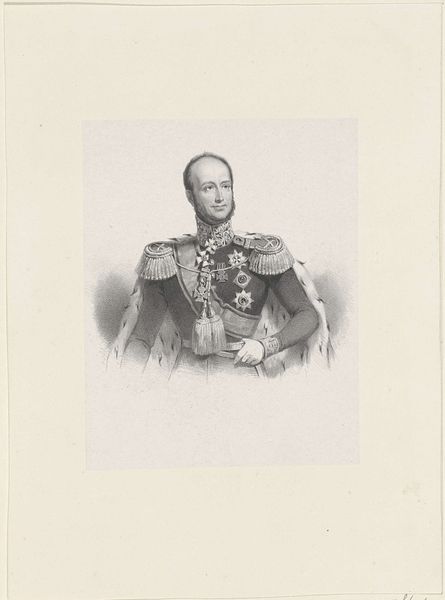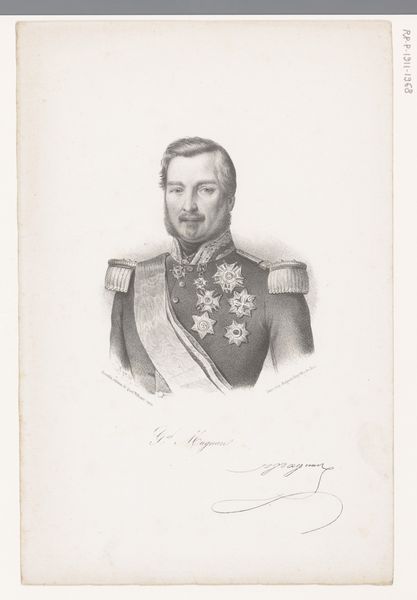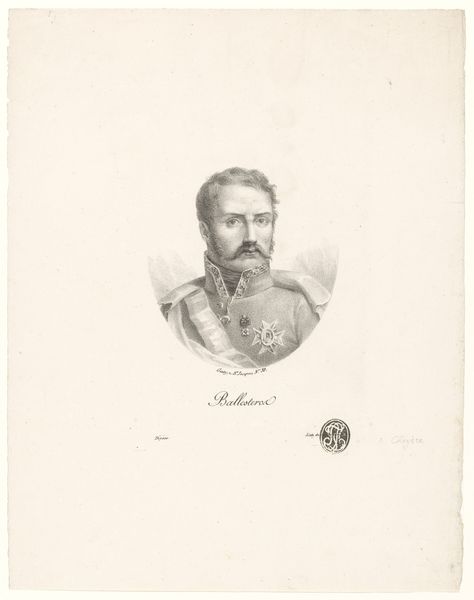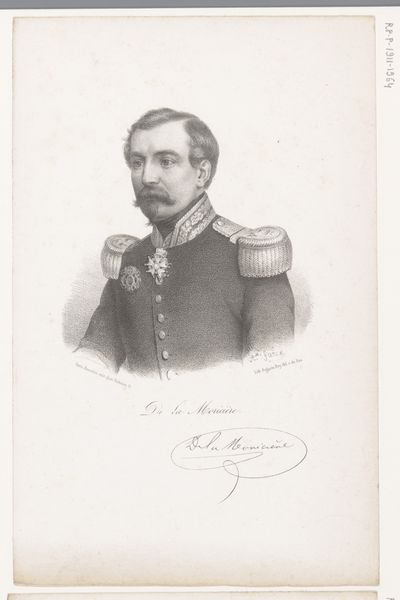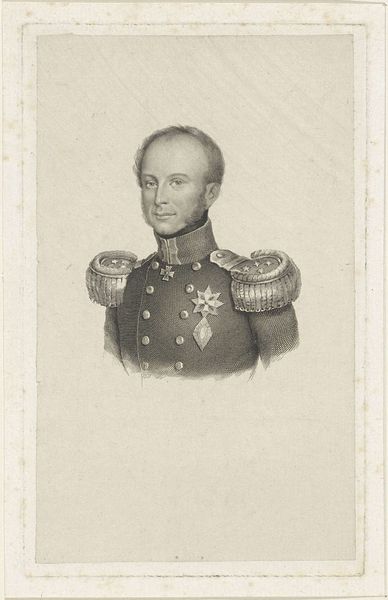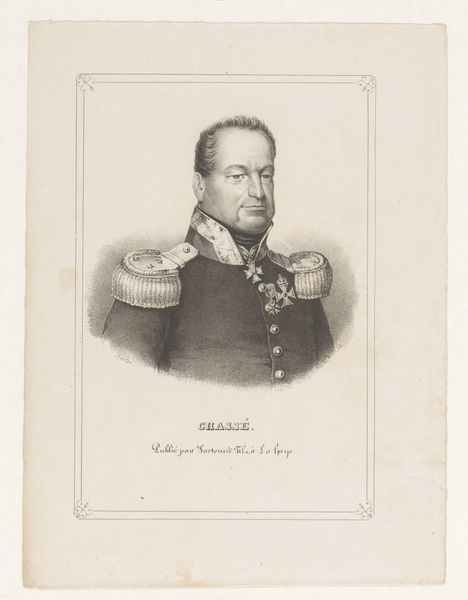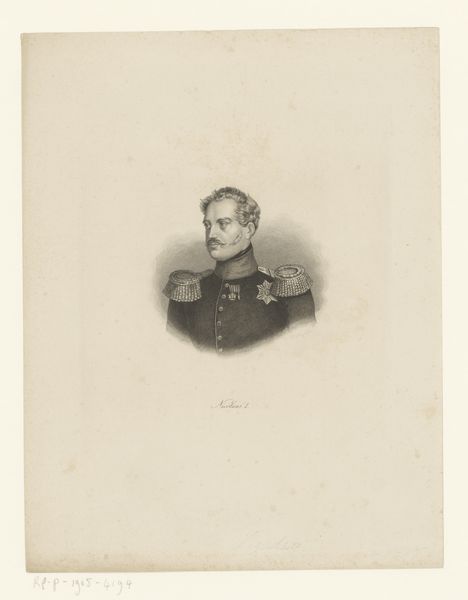
drawing, pencil
#
portrait
#
pencil drawn
#
drawing
#
pencil sketch
#
caricature
#
pencil drawing
#
pencil
#
19th century
#
portrait drawing
#
academic-art
#
realism
Dimensions: height 261 mm, width 189 mm
Copyright: Rijks Museum: Open Domain
Curator: Let's discuss this intriguing portrait drawing, simply titled "Portret van een officier" or "Portrait of an Officer," created in 1834 by Christian Heinrich Gottlieb Steuerwald. Editor: My immediate thought is that this figure projects a remarkable stoicism, or perhaps a sort of restrained dignity. It's captivating despite the grayscale and simple composition. Curator: Indeed. The medium itself—pencil on paper—is fascinating. Pencil production in the 19th century was undergoing significant standardization. Think about the source of graphite, the labor involved in its mining and processing, and then its distribution for the creation of art like this portrait. It’s a global network of materials and people culminating in this single image. Editor: I agree that it embodies industrialism, but consider the iconography. He wears his uniform and a prominent medal, symbols of service, status, and likely valor. There’s an implication of duty and national identity deeply embedded in his portrayal. His steady gaze suggests authority but the gentle modeling with the pencil softens what could otherwise have been rigid. It’s a psychological dance on paper. Curator: The choice of graphite may not just be economic but aesthetic. Its qualities offer a unique softness and depth of tone compared to charcoal or ink, which can lend the subject a somber gravity. I wonder about the artist's intentions concerning mass consumption and artistic ambition with portraiture; could it signal a transition toward broader accessibility in artistic expression, deviating from higher-class preferences for oils or watercolor during the period? Editor: Perhaps. But these symbols could reinforce hierarchy as well as identity. Notice the careful delineation of facial features? The attention almost gives this military regalia the character of symbolic armor, preserving and enshrining ideals of discipline and valor—intended as lasting attributes transcending mere physical existence. Curator: So while you see icons, I observe networks of production. Regardless, studying "Portrait of an Officer," urges us to connect dots beyond aesthetic appreciation. Editor: Yes, it's an opportunity to observe intersecting cultural forces. He invites interpretations on several layers of meaning: personal identity, honor, social roles, and material expression.
Comments
No comments
Be the first to comment and join the conversation on the ultimate creative platform.
